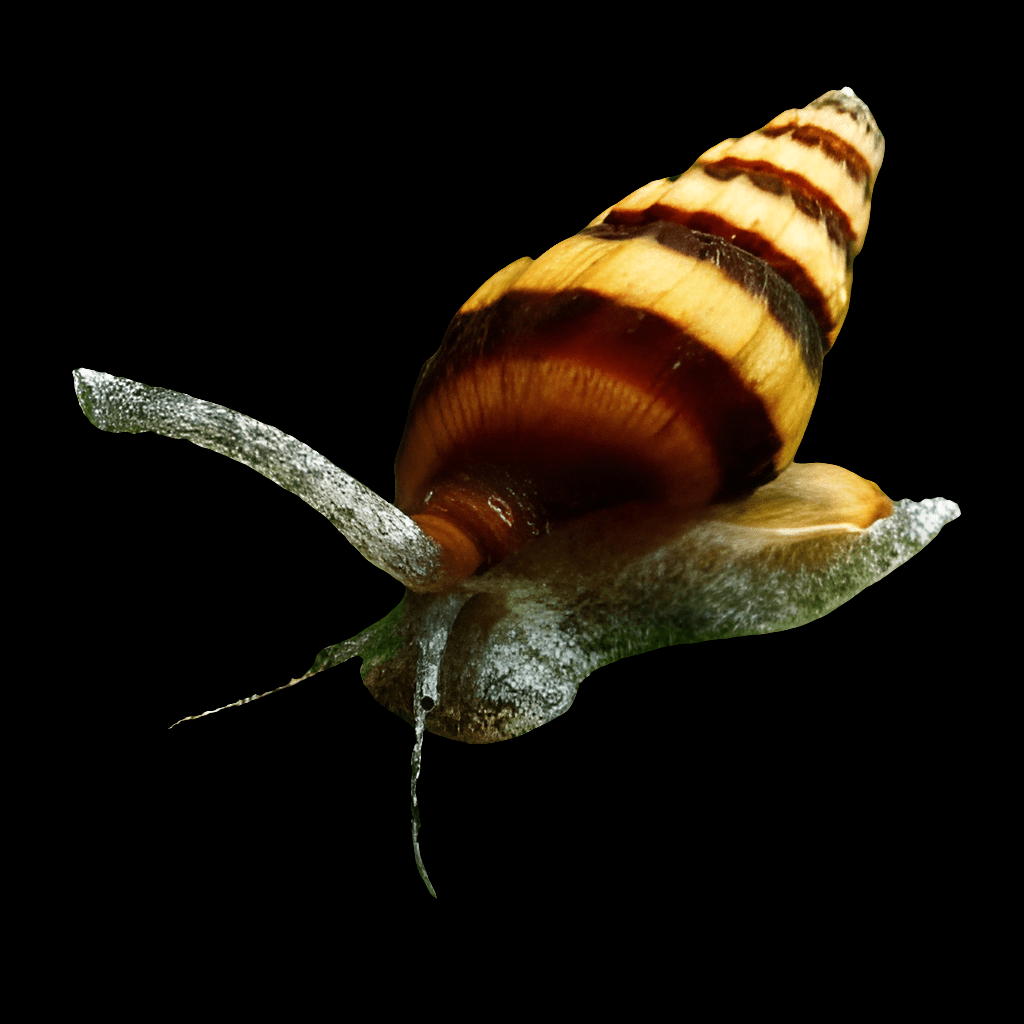Assassin Snail - Anentome helena
Not applicable with Auction Items
While aquarium snails make great additions to a freshwater cleanup crew, some species breed prolifically. Under the right conditions, certain aquarium snails can take over a tank in a matter of weeks.
If you’re dealing with a problem snail population, skip the chemical solutions and consider an alternative that really works: the assassin snail. These carnivorous snails will get to work, hunting down and feeding on the pest snails in your tank. Let’s explore what are assassin snails!
Species Snapshot
Species Name: Anentome helena
Common Names: assassin snail, bumblebee snail
Size: Up to 1 inch
Lifespan: 1-2 years
Native Distribution: Southeast Asia
With a deadly-sounding name like assassin snail, you might expect this species to be large and intimidating. In reality, assassin snails (Anentome helena) are small, growing to a maximum of 1 inch in length. Here’s what you need to know about assassin snails.
Anatomy and Appearance
Assassin snails—also known as bumblebee snails—belong to the family Nassariidae which is comprised mostly of marine snail species. Anentome helena is a freshwater snail species native to southeast Asia, found throughout Malaysia, Thailand, and in parts of Indonesia.
Like mystery snails, assassin snails have an operculum—a trapdoor-like anatomical structure that enables them to seal off the opening of their shell. The assassin snail’s shell is conical in shape, growing to an average length of around 1 inch.
The nickname bumblebee snail is a reference to the species’ striped appearance. The assassin snail’s shell exhibits alternating bands of dark brown and yellow-tan color.
Ideal Aquarium Setup
Like many freshwater aquarium snails, assassin snails are relatively easy to care for. They do best in a mature planted tank with clean water and stable conditions. An assassin snail aquarium should be set up to mimic the species’ native habitat. These snails prefer warm, alkaline, moderately hard to hard water.
The ideal tank parameters for assassin snails are:
Temperature: 70°F to 80°F
pH Level: 7.2 to 8.0
Water Hardness: 6dGH to 20 dGH
When it comes to choosing and setting up an assassin snail tank, the most important factor to consider is how you’ll keep your snails fed. While assassin snails may accept commercial foods, their ideal diet consists of other snails.
Unless you’re simply adding assassin snails to an existing tank as a population control measure, it may be wise to design your tank in a way that supports the other snails your assassins will be feeding on.
Planted tanks with plenty of driftwood and rockwork decorations are ideal for most freshwater snails who feed on natural algae growths, biofilm, and organic matter in the tank. The more food available to other snails, the faster they’ll breed—a consistent population of pest snails is key to keeping your assassin snails well-fed.
Diet and Feeding
Assassin snails are carnivorous, so they won’t be satisfied with a diet of algae growth or vegetable matter. In the wild, assassin snails feed primarily on worms and other gastropods like snails. In the home aquarium, they may accept carnivore-appropriate commercial foods as well as fresh or frozen meaty foods like bloodworms.
While assassin snails don’t grow as large as other species like mystery snails or rabbit snails, the availability of food is a key factor in determining their size. A ready supply of pest snails to feed on ensures optimal growth for assassin snails. You may also need to provide mineral supplements if you have very soft water.
Breeding Assassin Snails
If you’re concerned about assassin snails taking over your tank, you’ll be relieved to know that they are not hermaphrodites like bladder snails and ramshorn snails. This means both a male and female snail are required for breeding. It also means assassin snails reproduce much more slowly than most pest snails.
To breed assassin snails, it’s best to start with a group of six or more. This gives you the best chance of having at least one male and one female. When tank conditions are stable and food is plentiful, assassin snails will reproduce naturally.
It’s difficult to distinguish between male and female assassin snails. The mating process begins with a prolonged period of coupling, after which the female snail lays several individual eggs. The eggs are square with a round brown sac in the middle.
Female assassin snails typically deposit their eggs on driftwood or plants where they remain until they hatch after 3-8 weeks. After hatching, the baby snails typically bury themselves in the substrate to complete their maturity. This process can take up to 6 months but may be accelerated by supplementing the mineral content of your tank water.
When shipping live animals, 24 shipping is required for almost all. Shipping may be adjusted by AO due to holidays, weather conditions, or customer confirmation to be available.
If you successfully win an auction item, you will receive an email to confirm awarded auctions. Your payment request will also be in your login profile and an email as well.
Learn more about AO
Aquatic Oasis has a in store club that will soon be available to online subscribers as well. Stay tuned for details of the AO Aquatics Club coming soon. Register your email below to receive future information on AO Aquatics Club ONLINE


